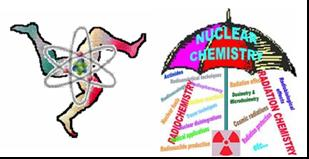Speaker
Dr
Marina B. Agostini Vasconcellos
(IPEN - CNEN/SP)
Description
Studies on the coast of São Paulo identified contamination in water and sediment samples in the region of Santos, and bioaccumulation of contaminants in marine organisms. Based on these studies, there was a need to assess exposure and effects of trace elements in a sentinel organism in this region, by using the bivalve Perna perna. The mussels were evaluated for bioaccumulation of As, Co, Cr, Fe, Se and Zn by Instrumental Neutron Activation Analysis (INAA) and Cd, Pb and Hg were determined by Atomic Absorption Spectroscopy (AAS). Effect biomarker was assessed by evaluation of lysosomal membrane stability, using the Neutral Red assay (NR). The organisms were collected at two sites in São Paulo State coast (23º58´-23º39´S, 46º30´-45º25´W): Cocanha (mussel farm) beach in São Sebastião and Santos Bay (Itaipu and Palmas). Seasonally, the Perna perna were collected between September/08 and July/09 in each study site. Among the sites of collection of the mussels, it was verified that Cocanha was the site where the concentrations of the determined elements were higher in most cases. Concerning the seasonal variations, higher values of studied elements were found in wintertime. Opposite to winter, in the summer the highest NR retention (110±22, 76±25 e 100±25 minutes, Cocanha, Itaipu and Palmas, respectively) indicated less stress. NR results found in Santos were significantly higher than those found in Cocanha, being the highest stress rates attributed to Itaipu. Correlations between the trace elements studied and the integrity of lysosomal membrane are being studied.
Author
Dr
Marina B. Agostini Vasconcellos
(IPEN - CNEN/SP)
Co-authors
Ms
Aline A. Kirschbaum
(IOUSP)
Ms
Claudia C. Minei
(IOUSP)
Ms
Daniele Seo
(IPEN - CNEN/SP)
Dr
E. Ceci P.M. de Sousa
(IOUSP)
Dr
Edson G. Moreira
(IPEN - CNEN/SP)
Ms
Marcia R. Gasparro
(IOUSP)
Dr
Marília G.M. Catharino
(IPEN - CNEN/SP)
